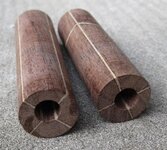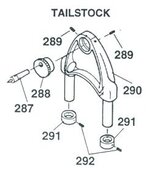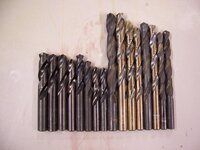soligen
Member
I got my collet chuck this week, and I'm still learning how to drill on the lathe. First practice attempt with a blank made from a 2x4 was off center by about .03 on one end, so I 'll be tweaking the tail stock alignment and re-testing before a drill a real blank.
Here is the question: I just made a segmented blank that includes pin stripes and an arch (reminiscent of a spider web). I need to get it right down the center. Would you guys recomend drilling the blank whole, or cutting it to fit the tubes first and drilling the parts seperate?
We'll probably see both answers, so please comment as to why.
Thanks
Here is the question: I just made a segmented blank that includes pin stripes and an arch (reminiscent of a spider web). I need to get it right down the center. Would you guys recomend drilling the blank whole, or cutting it to fit the tubes first and drilling the parts seperate?
We'll probably see both answers, so please comment as to why.
Thanks




